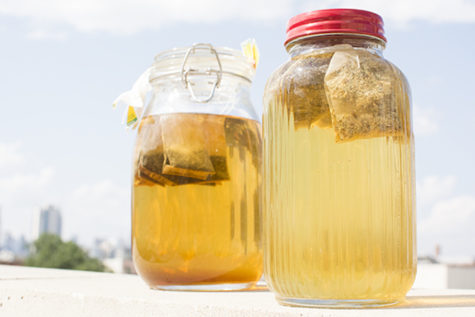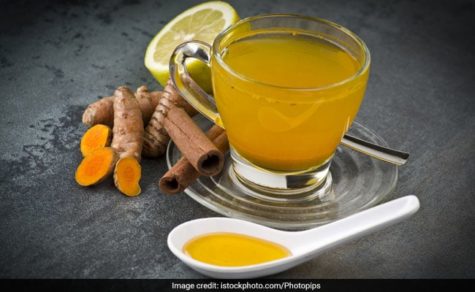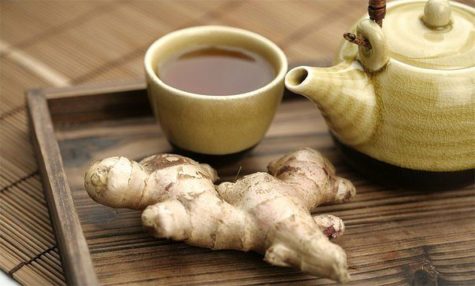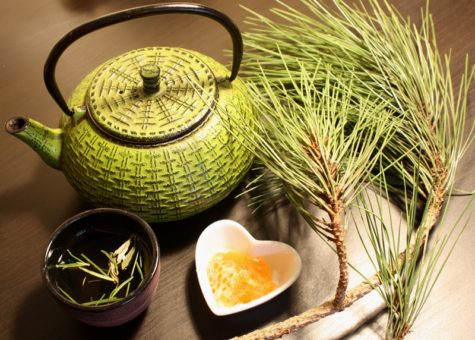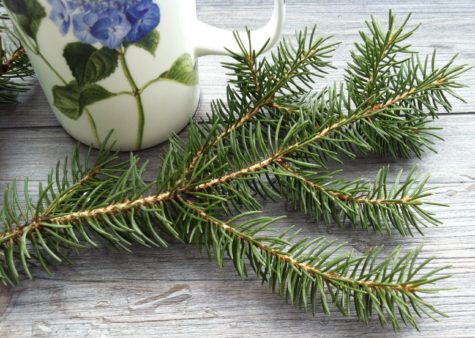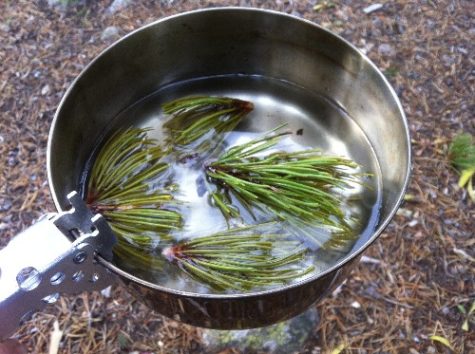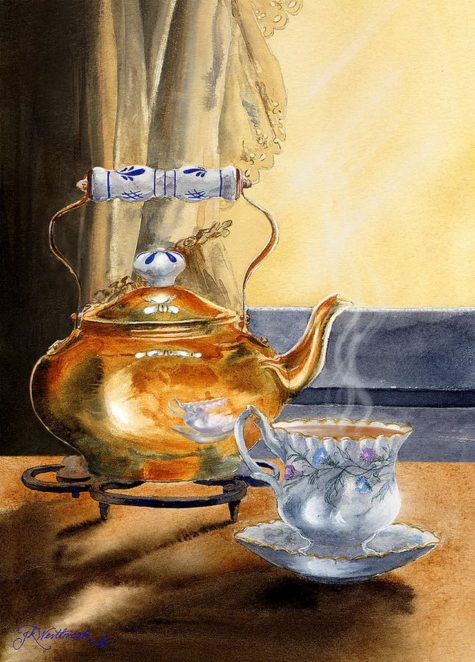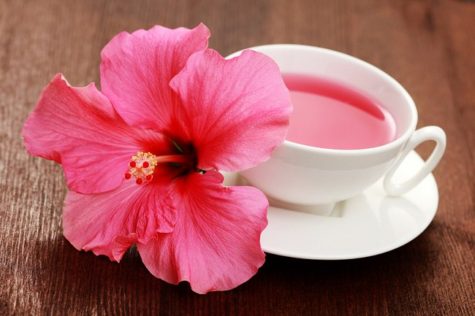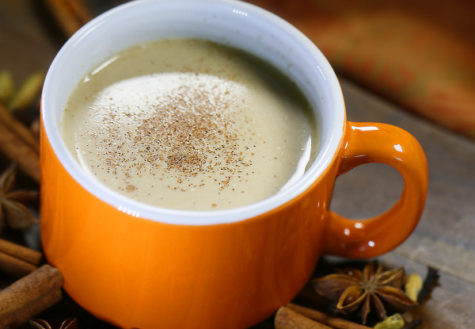Tea
Sun Tea
A great way to make some tea without heating up your kitchen is to use the power of the sun to make sun tea.
Here’s how:
Put 4 to 8 tea bags into a clean 2 quart or gallon glass container (4 teabags for a 2 quart container, 8 tea bags for a gallon container). Fill with water and cap. Place outside where the sunlight can strike the container for about 3 to 5 hours. Move the container if necessary to keep it in the sun. When the tea has reached its desired strength, remove from sun and put it in the refrigerator. You may or may not want to remove the tea bags at this point.
The tea will probably taste more mellow than what you are used to from using boiling water. The slow steeping has a way of bringing out a slightly different flavor from the tea. Also, because you didn’t use boiling water, you should refrigerate the tea and drink it up pretty quickly – a day or two. It will not keep as well as iced tea made from boiling water.
Found at: Simply Recipes
Cinnamon Turmeric Tea
Here is a recipe for Cinnamon Turmeric Tea to flush inflammation naturally.
Inflammation has been found to be the root of most diseases and ailments, so it is of high importance to fight it and thus improve overall health. The combination of cinnamon and turmeric is one of the most delicious and powerful natural ways to fight inflammation in the body.
These spices are inexpensive, calorie-free and easy to find in most supermarkets and natural foods stores. Because turmeric and cinnamon are safe with no side effects, they may be worth a try for their potential health benefits. Keep in mind that ground spices release flavor more slowly than whole spices.”
Green tea, is a rich source of polyphenols, that fight free radicals and prevent chronic diseases. Green tea regulates blood sugar, helps weight loss, fights inflammation in the gut, and lowers bad cholesterol while increasing good cholesterol. Also, it boosts liver health and the cognitive function, helps weight loss, and lowers risk of heart disease.
Here is how to prepare this miraculous drink:
Cinnamon Turmeric Iced Tea Recipe
Ingredients:
- 1/4 tsp. cinnamon
- 1/8 tsp. turmeric
- 1-2 Tbsp. black or green loose leaf tea
- 1 tsp honey
- lemon slices, optional
Instructions:
Add the ingredients to the bottom of a French press, add hot water to about the halfway point, and leave to steep for 5 minutes. Stir once press and leave the mixture to cool.
Pour the tea in a mug, and add the lemon slices. Enjoy and naturally fight inflammation in the body!
Source: Healthy Food House
How to Make an Herbal Tea
The standard way to make an herbal tea is to pour slightly cooled boiled water over the material to be infused, let it stand for 5 minutes, strain it, and drink it. You can let it stand longer if you want stronger flavor. You can save the strained plant material for another cup of tea because as long as you get taste and color – it’s still good to use.
The reason why boiled water should be allowed to cool for 5 minutes before pouring it on the plant material is because boiled water can harm the nutrient levels. In particular, vitamin C is denatured at 158° Fahrenheit or 70° Celsius. The same goes for cooking foods containing vitamin C.
- Fresh plant material
When a recipe refers to fresh plant material to be used, a 1/8 cup fresh material is typically used in a large mug, (or a few leaves), following the method above.
- Dried material
When a recipe refers to using dried material, use 2 teaspoons of material when making it.
- Bark or seeds
Should the recipe call for bark or seeds to be used, use 2 teaspoons of seeds or 1 tablespoon of bark.
- Sweetening your infusion
You could sweeten your nourishing herbal drink with honey or cane sugar should you so require, and a dash of fresh lemon juice may also enhance the taste.
Note:
When making herbal teas – make lots! Use it to make your rice, quinoa or couscous. Use cooled tea to water your houseplants to give them added nutrients
Source: Edible Wild Food
Pine Needle Tea
Pine needle tea has been prized for thousands of years for its many health benefits. What’s so good about pine needle tea? Here’s what I found out at Forest Holidays:
- Pine needle tea has a pleasant taste and smell (always a good start).
- It is rich in vitamin C (5 times the concentration of vitamin C found in lemons) and can bring relief to conditions such as heart disease, varicose veins, skin complaints and fatigue
- Vitamin C is also an immune system booster which means that pine needle tea can help to fight illness and infections.
- Pine needle tea also contains high levels of Vitamin A, which is good for your eyesight, improves hair and skin regeneration and improves red blood cell production.
- It can be used as an expectorant for coughs and to help relieve chest congestion; it is also good for sore throats.
- It brings you clarity and mental clearness.
- It can help with depression, obesity, allergies and high blood pressure.
- Pine needles contain antioxidants. These reduce free radicals, which are harmful to humans and can cause disease.
- Taoist priests drank pine needle tea as they believed it made them live longer. There is researched evidence that pine needle tea can help to slow the ageing process.
- Pick some pine needles and let them soak in boiling water on your stove and it will add a crisp pine smell all over the house. Perfect for Christmas.
How to make pine needle tea
- 1/2 cup young, bright green Eastern white pine needles
- 3 cups water
Instructions:
Bring water to a boil in a stainless steel pan. Add pine needles to water and reduce heat. Simmer for 20 minutes and remove from heat. Cover and let sit overnight or continue to next step and serve.
Strain out pine needles, sweeten to taste, and serve tea hot or cold.
Notes:
Make sure not to boil the pine needles in order to preserve the vitamin C and prevent the release of bitter terpenes. Vitamin C doesn’t last long, so drink this tea as soon as possible.
Pine Needle Tea In The Wild:
- Collect pine needles
- Build a fire
- Light it
- Boil water in a mess tin
- Add pine needles and let them infuse in the boiling water
- Sieve and serve
Enjoy your tea. Who knows, you might live to be 103 with 20:20 vision, a mind as sharp as a pine needle and no varicose veins. We’ll drink to that!
A word or two of caution:
Firstly, don’t try pine needle tea if you are pregnant. Secondly, most pine varieties can be used, but steer clear of Yew and Cypress which can sometimes be mistaken for pine. A good rule of thumb is to avoid flat needles. If in doubt, ask a Forest Ranger.
Found at: Forest Holidays
It’s Tea Time
I think it’s time for a spot of tea!
First up, let’s talk about the tea.
What’s in a tea? Well, hundreds of benefits are hidden within this coloured water that not so many people are particularly fond of. Summer is a great time to take up this wonderful habit, by creating the most appealing iced teas and thus benefiting from their medicinal and restorative powers.
What few of us know is the fact that the word “tea” is correctly used for the following types only:
- Green tea
- Black tea
- White tea
- Oolong tea
- Pu-erh tea
These 5 teas are definitely worth the try. The rest should simply be referred to as infusions. The five kinds are all derived from the Camellia sinensis plant, a shrub native to China and India, and contain unique antioxidants called flavonoids. They all protect against free radicals that can contribute to cancer, heart disease, and clogged arteries. Oolong and black teas are oxidized or fermented, so they have lower concentrations of flavonoids than green tea, but nevertheless their antioxidising power is still high.
Green tea makes you smart and slim
Green tea is supposedly the healthiest beverage on our planet. It contains more than just plain caffeine. Apart from the fact that it produces a response without causing the “jittery” effects associated with too much caffeine, it also has the amino acid L-theanine, which increases the activity of the inhibitory neurotransmitter GABA, which has anti-anxiety effects. It also increases dopamine and the production of alpha waves in the brain.
In other words, these two components mixed together are particularly capable of improving overall brain function.
Apart from making you smart, your drinking at least three cups of green tea a day is recommended to raise the body’s metabolic rate. It is believed that the catechins found in it increase the production of heat within the body, which is related to burning calories. These compounds may inhibit certain chemicals in the brain, thus prolonging this process.
Black tea makes your teeth healthy
Black tea was proved to reduce plaque formation as well as restricting bacteria growth that promotes the formation of cavities and tooth decays. The flavonoids found in black tea kill and surpass cavity bacteria as well as inhibit the growth of bacterial enzymes that form along with that sticky white stuff on our teeth that attracts plaque like a magnet.
White tea keeps your bones healthy
White tea’s antioxidants and anti-aging properties not only protect and help reverse damaged skin, but a regular intake of white tea can improve bone density and strength, and may provide a natural relief from the symptoms of osteoporosis.
Oolong tea makes your skin look healthy and young
According to the Tea Association of the United States, oolong tea falls somewhere between green and black teas, as its leaves are only partially oxidized.
Patients diagnosed with eczema are recommended to drink 3 cups of oolong tea per the day. The beneficial results of oolong tea are likely to be seen in less than a week in these patients. All oolong tea drinkers show remarkable improvement in their skin.
Keep in mind that despite its miraculous effects, oolong tea tends to be very high in caffeine, which is not the healthiest component of this beverage. So if a healthy skin is your aim, try not to exaggerate and drink more than 3 cups a day.
Pu-erh tea is the best hangover cure
In traditional Chinese herbalism, pu-erh tea is considered to open the meridians and warm the spleen and stomach. It helps digestion and cleans your blood. It is often consumed after heavy meals or drunk as a hangover cure or preventative.
The microbial aging of pu-erh tea can result in the production of lovastatin, a natural statin that is used to lower levels of bad cholesterol such as LDL. One study found that the longer this type of tea was aged, the more statin was produced.
So drink up! It is recommended to have a slightly hot cup of tea every time you feel hot, and your body’s temperature will return to its regular value.
How to make a good pot of tea
These are the golden rules:
- Tea loves oxygen – it helps the flavor develop, so always use freshly drawn cold water in the kettle.
- Make sure your pot is clean.
- Warm the pot by swirling a small amount of boiled water in it.
- For black tea, only pour on freshly boiled water and do not over-boil it.
- For green tea, always use the water just at the boil.
- One teaspoon of loose tea per person and one teaspoon for the pot is about right, but add as much or as little to make it to the strength you like.
- Some people believe that sugar masks the flavors in tea. Why not try a fruit tea if you prefer a sweeter taste?
- A tea cosy extends the brewing time and can make the tea bitter and stewed. A removable infuser or teabags can help to get round this problem.
How long should I allow a teabag to brew?
Twinings of London recommends that you allow the teabag to brew for two and a half to three minutes. This allows the flavor to fully develop. Then add milk or lemon or enjoy it black, whatever your preference.
And how long should I allow loose tea to brew?
We recommend that you allow loose tea to brew in a teapot for up to seven minutes. The general rule is: the larger the leaf, the longer the brewing time. Earl Grey and Lady Grey need five minutes, while a smaller leaf tea will only need about four minutes.
Does loose tea make better tea than teabags?
Both have their benefits. For many people, the ritual of preparing loose tea is a pleasure in itself, so this contributes to the enjoyment, while teabags are more convenient. The leaf size is different but the quality in the cup will be the same.
Should the milk go in first or second?
Historically, the ‘milk in first’ rule was to protect the fine bone china it was served in – it’s a very individual thing.
Sometimes I get an oily residue around my cup and on the surface of my tea – what is it?
Because of the small leaf-size in a teabag, the tea can release some essential oils which can sometimes produce a residue. However, this brown residue occurs most often in areas with hard water, so a carbon water filter will reduce this considerably.
How should tea be stored?
Tea absorbs moisture and kitchen smells. To keep your tea fresh and avoid spoiling the flavor, keep loose tea or teabags in a sealed jar or tin.
Borrowed from: The Prosperity Project
Summer Tea
This tea is refreshing on any warm day or after exertion in the garden. It is equally pleasant hot or cold.
- 2 tsp hibiscus flowers
- grated peel of ½ a lemon (optional)
- grated peel of ½ a lime (optional)
Note:
This blend is for one person and is intended to have half a pint of boiling water poured over it. Allow the infusion to stand for 10 minutes before straining and do not stir, as this bruises the plants. Obviously, you can adjust the amount of water or standing time to your own taste. If you prefer your tea sweet, add a little honey, not sugar, to the strained infusion.
Hawthorn Flower Tea
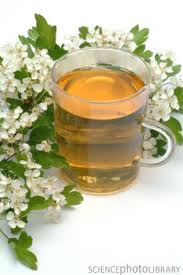 Hawthorn flower tea infusion. This is a medicinal drink which is good for blood pressure, any heart disorders, including blocked arteries.
Hawthorn flower tea infusion. This is a medicinal drink which is good for blood pressure, any heart disorders, including blocked arteries.
Here’s how to make it:
- Pick as many hawthorn flowers as you can, along with the leaves around them.
- Drink them fresh or dry them in the sun and store.
- Put some into a large cup of boiling water and leave to stew for 20 minutes.
- Strain and add 1 teaspoon honey to the liquid.
Found at River Cottage
Winter Tea
When the chill winds blow and you feel the need for something warming, try this- it even smells of Yule.
- 1 tsp cinnamon
- ½ tsp nutmeg
- 4 whole cloves
- 1 crushed cardamom seed
Note: This recipe is for one person and is intended to have half a pint of boiling water poured over it. Allow the infusion to stand for 10 minutes before straining. You can adjust the amount of water or standing time to your own taste. If you prefer your tea sweet, add a little honey, not sugar, to the strained infusion.
Source: Live Journal
Spiced Milk and Honey Tonic
The secret to restoring healthy breathing is found in this spiced tea. Milk and honey are demulcents that coat dry, irritated respiratory passages. These coating properties also help you expectorate mucus lodged in the lungs. Spices in this tea liquefy mucous, so it flows freely, flushing out pathogens along the way. Finally, the warmth encourages sinuses to dilate, so you can breath easy. For added respiratory support, add 1 teaspoon of ghee to your hot milk.
Ingredients:
- 1 leaves Bay Leaf
- 3/4 tsp Black Pepper
- 3/4 tsp Cardamom
- 1 pinch Cinnamon
- 3/4 tsp Ginger (Dried)
- 1 tsp Honey
- 1 cup Milk
- 1 pinch Star Anise
Preparation:
Bring milk to medium heat and, lower heat to a gentle simmer and add all spices. Cook for 5 minutes stirring frequently. If the milk becomes foamy, lower heat quickly or remove completely. Milk easily boils over the side of the pan when it gets too hot. It should look shiny on the surface with tiny bubbles. Remove from heat and add honey to taste.
Source: Joyful Belly
Poppy Seed Sleepy Time Tea
Warm and relaxing. Aromatic cardamom balances the grounding tones of nutmeg and poppy seeds. This recipe is a gentle sedative if you are having a hard time falling asleep. Poppy Seed Sleepy Time Tea will gently lull you into a comforting dreamscape.
Ground-up poppy seeds create an oil-rich paste that is dark & earthy, a substance that embodies night’s stillness and nurturing yin. Aromatic cardamom and heating honey moves soothing warmth throughout your tired body. When steeped in rich whole milk, this tea becomes the soothing restorative you’ve been dreaming of for ages. The next time you can’t sleep, pull on your favorite slippers, shuffle to the kitchen, and make a cup of Poppy Seed Sleepy Time Tea. You’ll be drifting off to dreamland in no time.
Ingredients:
- 2 pinches Cardamom
- 1 tsp Honey
- 1 cup Milk
- 1 pinch Nutmeg
- 3/4 tsp Poppy Seed
Preparation:
Grind the poppy seeds in a coffee grinder or pulverize with a mortar and pestle. Add to a small saucepan with 8-12 ounces of milk. Boil for twenty minutes. Add honey, ground cardamom and nutmeg, and serve.
Source: Joyful Belly
